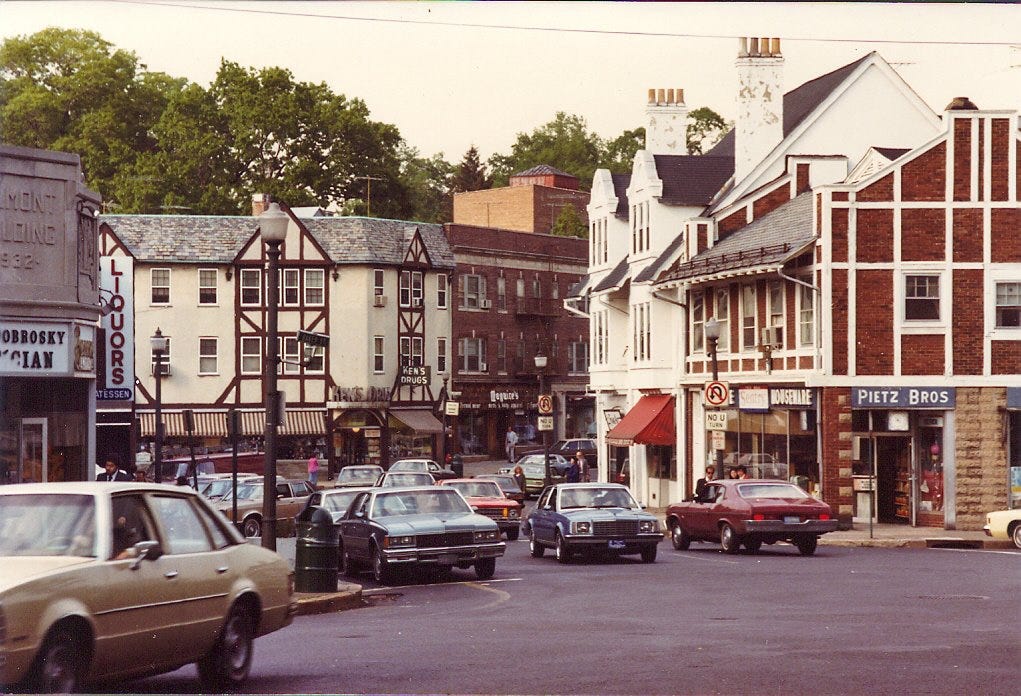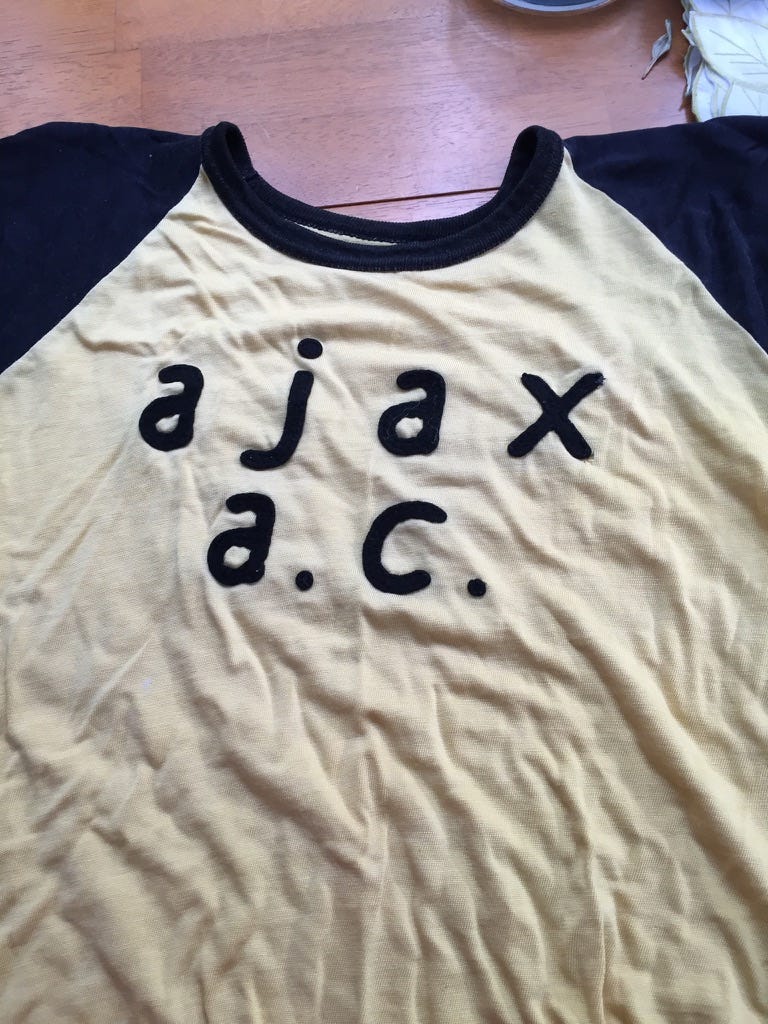https://jerzwear.com/2021/01/17/maplewood-nj-my-hometowns-pt-1/#google_vignette
“He had also gained the right to travel to New York on his own, a new liberty he intended to exercise as often as possible, for the beautiful but dreary town of Maplewood had been built for the sole purpose of making people want to get out of it . . .”
Paul Auster, 4321
Paul Auster’s April, 2024 death spawned a lengthy Times obituary that called him “The Patron Saint of Literary Brooklyn.” The first Auster book that I read, Baumgardner, concerned a retired Princeton professor who had grown up in Maplewood and its partner town, South Orange. It was his last.
Auster and I were both born in postwar Newark, attended the South Orange-Maplewood schools, and graduated from Columbia High School. In 4321, he describes 1960s Columbia as a “factory of secondary education,” for 2100 kids of various religious, ethnic, and socio-economic backgrounds, but with little racial diversity. He notes subtle and not-so-subtle forms of anti-Semitism in the two towns. Anyone who has read Ta-Nehisi Coates can divine that, for some time, the real estate business had probably colluded with government to keep the two towns largely white.
Maplewood was a bedroom community, a place to which corporate executives* repaired at day’s end to rest, before returning to New York City the next morning on the olive cars of the Erie Lackawanna. In that sense, Auster spoke truth about the town’s origins. It’s fair to say that he wasn’t much of a fan of the place, and maybe only a little more of South Orange, where he also lived.
Weeks ago, I received an email, sent from Mike Butkus to me and Lee Albanese. (CHS ‘74, all of us.) It included this photo:
(Photo credit: Michael Butkus)
That’s the game jersey of the Ajax Athletic Club, originally gold and black, and you wore it with a black and gold cap. We three played for that softball team in the South Orange recreation department’s high school boys’ softball league. (We took the name from a Little Rascals episode.) We may have been the only team in the league wearing uniforms. I imagine we were viewed as boy scouts by other teams, one of which named itself The Quaaludes. I don’t know what The Quaaludes did after games, but our team usually wound up at Gruning’s restaurant, a spot that Auster references fondly in 4321, eating sundaes.
Mike’s photo got me thinking. If I, following Auster, wrote up life in Maplewood as I experienced it from the early ‘60s through the late ‘70s, what would I include?
Lots, including this:
My friends and I spent hours playing sports with no parental presence. Even if you weren’t that talented, pickup games required bodies. (You might get chosen last. You might get shunted to right field. Someone might choose not to pass you the ball even if you were open for a shot. But they needed you.) The secondary schools ran intramural leagues in touch football and basketball. (I’m ashamed to say that I sense, but don’t know, that parallel options for female students didn’t exist.)
Well-funded municipal recreation departments sponsored evening leagues for high school boys who’d formed their own teams. Cut consistently from the high school team, I played basketball for the Governors of Kong Wong Province, a name taken from a sinister character in the scary wartime film, The Purple Heart.
This all continued into college. Us college lacrosse players played summertime games arranged by Mike’s brother John—nicknamed ‘Don King,’ after the boxing promoter—against players from Montclair, Summit, and Clark. One warm December 29, we all took part in John’s masterpiece, the impromptu “Don King Red Dye #2 Lacrosse Classic” on the outfield of the semipro baseball diamond.
And beyond that: Robert Uzzolino, my brother Jim and I were meeting up at Memorial Park to throw around a lacrosse ball into our fifties.
Some of us spent incredible amounts of time watching television. New York had seven stations, which was a lot compared to other regions. Local, mom-and-pop channels 5, 9, and 11 ran hours of old sitcoms. I can still reconstruct dialogue from The Honeymooners, The Odd Couple, Abbott and Costello, The Little Rascals. Pro wrestling inhabited only these channels. As did the Yankees and Mets. Weekends featured a steady flow of war films: Guadalcanal Diary, Battleground, God is My Co-Pilot. Bowery Boys movies. Sunday morning Notre Dame football highlights. You can see where I developed my high-brow tastes.
We walked a lot. The two towns had sidewalks and downtowns. You walked to elementary school, walked home for lunch, walked back to school, then walked home again. Walking to school was not without its benefits; in junior high, my route took me through Maplewood village, which had at least three spots where I could plunk down a dime and buy a Snickers and get back a penny or two in change.
All of this shaped me. We settled disputed playground calls ourselves. We had commercial dealings with middle-aged merchants. As an educator, that learned sense of play, that capacity to create your own fun, often served me well in the classroom when things needed a jolt. The comic timing, the cornball humor, that I absorbed from all that TV sometimes aided me as a teacher, and as a parent of young children. And the sense that walking is a good way to view one’s world from ground level has enhanced my life, even today.
Mike went to Princeton, Lee to Georgetown, John to Lehigh, Robert to Montclair State, Jim to Delaware, me to NC State. None of us live in town anymore; in a sense we prove Auster’s adage. But, maybe more than Auster, we’re thankful that we grew up where we did, with one another, among friends, among family. In our flawed, beautiful hometown.
Paul Auster.
https://www.nytimes.com/2024/04/30/books/paul-auster-dead.html
Notes:
(*) Male executives, overwhelmingly.
Alex Williams, “Paul Auster, the Patron Saint of Literary Brooklyn, dies at 77,” www.nytimes. 30 April 2024.
Auster, Paul, Baumgartner, 2023.
Auster, Paul, 4321, 2017.







Thanks for bringing back some fond memories. I also remember going to the
“football clinic “ on Saturday mornings at 9:00 at memorial park. CHS varsity football players served as coaches. We practiced for about 45 minutes, then played a game. One of my coaches was Johnny Pew. In college I coached in the clinic with Dennis Cotter.
We also played tackle football by ourselves at Clinton school; no parents within sight.
My brother along with Johnny Porcelli and many other local boys had a team called the Clinton Patriots coached by Mark DeMichael, a varsity football player. They played other teams from Maplewood and South Orange, including MJHS and Newstead. They even played a team from the Chancellor Avenue area of Newark, that was arranged by Essex Avenue’s QB Gary Jardim’s father. The team never lost and I had the honor of being the team’s de facto water boy/mascot. I remember going to the candy store on Irvington avenue where candy bars were a nickel before any state tax. It’s probably the reason why I eventually put on “some” weight.
There was also a neighborhood sense of community: Frankie Barnes, Mark DeMichael, Robert Giordano and my brother all wore number 42 for the CHS football team.
The walking to school could also be quite a chore, especially walking to SOJH. Patty walked from Van Ness Terrace to MJHS-a real chore. We never got a ride unless it was raining or snowing hard.
Thanks for reminding me of the “good old days” when for better or worse (I’ll say better”) we knew how to have fun without parental interference. Our main interest was to have fun and enjoy ourselves.
A great recollection of a world we grew up in that is a beautiful memory now.